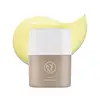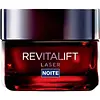What's inside
What's inside
 Key Ingredients
Key Ingredients

 Benefits
Benefits

 Concerns
Concerns

 Ingredients Side-by-side
Ingredients Side-by-side

Water
Skin ConditioningMethylpropanediol
SolventGlycerin
HumectantHydrogenated Polydecene
EmollientCaprylic/Capric Triglyceride
MaskingDipropylene Glycol
HumectantPentaerythrityl Tetraethylhexanoate
EmollientGlyceryl Stearate
EmollientNiacinamide
SmoothingBetaine
HumectantVinyldimethicone
Caffeine
Skin ConditioningMethyl Trimethicone
Skin ConditioningCetearyl Alcohol
EmollientPanthenol
Skin ConditioningHydrogenated Poly(C6-14 Olefin)
EmollientFicus Carica Fruit Extract
HumectantCentella Asiatica Extract
CleansingMonarda Didyma Leaf Extract
Skin ConditioningSalix Alba Bark Extract
AstringentAdansonia Digitata Fruit Extract
EmollientMacadamia Ternifolia Seed Oil
EmollientHydrogenated Lecithin
EmulsifyingSodium Hyaluronate
HumectantSimmondsia Chinensis Seed Oil
Emollient1,2-Hexanediol
Skin ConditioningC10-18 Triglycerides
EmollientSodium Stearoyl Glutamate
CleansingButylene Glycol
HumectantHydroxyacetophenone
AntioxidantHydroxypropyl Cyclodextrin
MaskingHydroxyethyl Acrylate/Sodium Acryloyldimethyl Taurate Copolymer
Emulsion StabilisingJojoba Esters
EmollientGlyceryl Stearates
EmollientBehenyl Alcohol
EmollientCetyl Alcohol
EmollientStearyl Alcohol
EmollientAmmonium Acryloyldimethyltaurate/Vp Copolymer
Xanthan Gum
EmulsifyingEthylhexylglycerin
Skin ConditioningHelianthus Annuus Seed Wax
Skin ConditioningCholesterol
EmollientPolyglyceryl-10 Laurate
Skin ConditioningDisodium EDTA
Adenosine
Skin ConditioningRetinal
Skin ConditioningSilica
AbrasiveBrassica Campestris Sterols
EmollientPolyglyceryl-3 Methylglucose Distearate
EmulsifyingTocopherol
AntioxidantSorbitan Isostearate
EmulsifyingAluminum/Magnesium Hydroxide Stearate
Emulsion StabilisingSucrose Distearate
EmollientPotassium Cetyl Phosphate
EmulsifyingPentaerythrityl Tetra-Di-T-Butyl Hydroxyhydrocinnamate
AntioxidantPolyglycerin-3
HumectantSqualane
EmollientCaprylyl Glycol
EmollientEthyl Hexanediol
SolventAcetyl Hexapeptide-8
HumectantWater, Methylpropanediol, Glycerin, Hydrogenated Polydecene, Caprylic/Capric Triglyceride, Dipropylene Glycol, Pentaerythrityl Tetraethylhexanoate, Glyceryl Stearate, Niacinamide, Betaine, Vinyldimethicone, Caffeine, Methyl Trimethicone, Cetearyl Alcohol, Panthenol, Hydrogenated Poly(C6-14 Olefin), Ficus Carica Fruit Extract, Centella Asiatica Extract, Monarda Didyma Leaf Extract, Salix Alba Bark Extract, Adansonia Digitata Fruit Extract, Macadamia Ternifolia Seed Oil, Hydrogenated Lecithin, Sodium Hyaluronate, Simmondsia Chinensis Seed Oil, 1,2-Hexanediol, C10-18 Triglycerides, Sodium Stearoyl Glutamate, Butylene Glycol, Hydroxyacetophenone, Hydroxypropyl Cyclodextrin, Hydroxyethyl Acrylate/Sodium Acryloyldimethyl Taurate Copolymer, Jojoba Esters, Glyceryl Stearates, Behenyl Alcohol, Cetyl Alcohol, Stearyl Alcohol, Ammonium Acryloyldimethyltaurate/Vp Copolymer, Xanthan Gum, Ethylhexylglycerin, Helianthus Annuus Seed Wax, Cholesterol, Polyglyceryl-10 Laurate, Disodium EDTA, Adenosine, Retinal, Silica, Brassica Campestris Sterols, Polyglyceryl-3 Methylglucose Distearate, Tocopherol, Sorbitan Isostearate, Aluminum/Magnesium Hydroxide Stearate, Sucrose Distearate, Potassium Cetyl Phosphate, Pentaerythrityl Tetra-Di-T-Butyl Hydroxyhydrocinnamate, Polyglycerin-3, Squalane, Caprylyl Glycol, Ethyl Hexanediol, Acetyl Hexapeptide-8
Water
Skin ConditioningDimethicone
EmollientSimmondsia Chinensis Seed Oil
EmollientHydrogenated Castor Oil Dimer Dilinoleate
Skin ConditioningAlcohol Denat.
AntimicrobialHydroxypropyl Tetrahydropyrantriol
Skin ConditioningGlycerin
HumectantIsononyl Isononanoate
EmollientPropanediol
SolventPropylene Glycol
HumectantCetyl Alcohol
EmollientCetyl Hydroxyethylcellulose
Emulsion StabilisingCentella Asiatica Extract
CleansingHydrolyzed Rice Protein
Skin ConditioningAcetyl Dipeptide-1 Cetyl Ester
Skin ConditioningCapryloyl Salicylic Acid
ExfoliatingSodium Citrate
BufferingSodium Hyaluronate
HumectantSodium Hydroxide
BufferingAscorbyl Glucoside
AntioxidantRetinyl Palmitate
Skin ConditioningSilica
AbrasiveButylene Glycol
HumectantCaprylyl Glycol
EmollientHydrated Silica
AbrasiveHydroxyethylcellulose
Emulsion StabilisingPentylene Glycol
Skin ConditioningPolysorbate 60
EmulsifyingSilica Dimethyl Silylate
EmollientSorbitan Laurate
EmulsifyingTocopherol
AntioxidantXanthan Gum
EmulsifyingBenzyl Alcohol
PerfumingCitronellol
PerfumingIsoeugenol
PerfumingLimonene
PerfumingLinalool
PerfumingPhenoxyethanol
PreservativeParfum
MaskingWater, Dimethicone, Simmondsia Chinensis Seed Oil, Hydrogenated Castor Oil Dimer Dilinoleate, Alcohol Denat., Hydroxypropyl Tetrahydropyrantriol, Glycerin, Isononyl Isononanoate, Propanediol, Propylene Glycol, Cetyl Alcohol, Cetyl Hydroxyethylcellulose, Centella Asiatica Extract, Hydrolyzed Rice Protein, Acetyl Dipeptide-1 Cetyl Ester, Capryloyl Salicylic Acid, Sodium Citrate, Sodium Hyaluronate, Sodium Hydroxide, Ascorbyl Glucoside, Retinyl Palmitate, Silica, Butylene Glycol, Caprylyl Glycol, Hydrated Silica, Hydroxyethylcellulose, Pentylene Glycol, Polysorbate 60, Silica Dimethyl Silylate, Sorbitan Laurate, Tocopherol, Xanthan Gum, Benzyl Alcohol, Citronellol, Isoeugenol, Limonene, Linalool, Phenoxyethanol, Parfum
Ingredients Explained
These ingredients are found in both products.
Ingredients higher up in an ingredient list are typically present in a larger amount.
Butylene Glycol (or BG) is used within cosmetic products for a few different reasons:
Overall, Butylene Glycol is a safe and well-rounded ingredient that works well with other ingredients.
Though this ingredient works well with most skin types, some people with sensitive skin may experience a reaction such as allergic rashes, closed comedones, or itchiness.
Learn more about Butylene GlycolCaprylyl Glycol is a humectant and emollient, meaning it attracts and preserves moisture.
It is a common ingredient in many products, especially those designed to hydrate skin. The primary benefits are retaining moisture, skin softening, and promoting a healthy skin barrier.
Though Caprylyl Glycol is an alcohol derived from fatty acids, it is not the kind that can dry out skin.
This ingredient is also used as a preservative to extend the life of products. It has slight antimicrobial properties.
Learn more about Caprylyl GlycolCentella Asiatica Extract (Centella) is derived from an herb native to Southeast Asia. It is famous for its anti-inflammatory and soothing properties.
Centella is rich in antioxidants and amino acids, such as Madecassic Acid and Asiaticoside.
Studies show the compounds in centella help with:
The combination of all these properties makes centella effective at soothing, hydrating, and protecting the skin.
Other great components of centella include Vitamin A, vitamin C, several B vitamins, and Asiatic Acid.
Fun fact: Centella has been used as a medicine and in food for many centuries. As a medicine, it is used to treat burns, scratches, and wounds.
Learn more about Centella Asiatica ExtractCetyl Alcohol is a fatty alcohol. Fatty Alcohols are most often used as an emollient or to thicken a product.
Its main roles are:
Though it has "alcohol" in the name, it is not related to denatured alcohol or ethyl alcohol.
The FDA allows products labeled "alcohol-free" to have fatty alcohols.
Learn more about Cetyl AlcoholGlycerin is already naturally found in your skin. It helps moisturize and protect your skin.
A study from 2016 found glycerin to be more effective as a humectant than AHAs and hyaluronic acid.
As a humectant, it helps the skin stay hydrated by pulling moisture to your skin. The low molecular weight of glycerin allows it to pull moisture into the deeper layers of your skin.
Hydrated skin improves your skin barrier; Your skin barrier helps protect against irritants and bacteria.
Glycerin has also been found to have antimicrobial and antiviral properties. Due to these properties, glycerin is often used in wound and burn treatments.
In cosmetics, glycerin is usually derived from plants such as soybean or palm. However, it can also be sourced from animals, such as tallow or animal fat.
This ingredient is organic, colorless, odorless, and non-toxic.
Glycerin is the name for this ingredient in American English. British English uses Glycerol/Glycerine.
Learn more about GlycerinSilica, also known as silicon dioxide, is a naturally occurring mineral. It is used as a fine, spherical, and porous powder in cosmetics.
Though it has exfoliant properties, the function of silica varies depending on the product.
The unique structure of silica enhances the spreadability and adds smoothness, making it a great texture enhancer.
It is also used as an active carrier, emulsifier, and mattifier due to its ability to absorb excess oil.
In some products, tiny microneedles called spicules are made from silica or hydrolyzed sponge. When you rub them in, they lightly polish away dead skin layers and enhance the penetration of active ingredients.
Learn more about SilicaThis oil comes from the seeds of the desert shrub called Jojoba. It is more commonly known as jojoba oil, a non-comedogenic oil.
Jojoba oil does not contain fragrance and has many fatty-acids, making it a great soothing ingredient.
It also contains Vitamin E, a great moisturizing ingredient. Vitamin E is also an antioxidant and protects your skin against oxidative damage.
This ingredient humectant properties, meaning it helps draw moisture from the air. This helps keep your skin hydrated.
While jojoba has antibacterial properties, it is only able to kill some strains of bacteria.
Studies also show it helps in wound healing. In fact, Indigenous cultures have used jojoba as a moisturizer and to help treat burns for centuries.
Fun fact: Jojoba oil similar to natural human skin sebum, so it has a great effect on dry skin. It is also promising with helping to regulate sebum production.
Due to its fatty acid content, Jojoba oil may not be fungal acne safe. We recommend speaking with a professional if you have any concerns.
Learn more about Simmondsia Chinensis Seed OilSodium Hyaluronate is hyaluronic acid's salt form. It is commonly derived from the sodium salt of hyaluronic acid.
Like hyaluronic acid, it is great at holding water and acts as a humectant. This makes it a great skin hydrating ingredient.
Sodium Hyaluronate is naturally occurring in our bodies and is mostly found in eye fluid and joints.
These are some other common types of Hyaluronic Acid:
Learn more about Sodium HyaluronateTocopherol (also known as Vitamin E) is a common antioxidant used to help protect the skin from free-radicals and strengthen the skin barrier. It's also fat soluble - this means our skin is great at absorbing it.
Vitamin E also helps keep your natural skin lipids healthy. Your lipid skin barrier naturally consists of lipids, ceramides, and fatty acids. Vitamin E offers extra protection for your skin’s lipid barrier, keeping your skin healthy and nourished.
Another benefit is a bit of UV protection. Vitamin E helps reduce the damage caused by UVB rays. (It should not replace your sunscreen). Combining it with Vitamin C can decrease sunburned cells and hyperpigmentation after UV exposure.
You might have noticed Vitamin E + C often paired together. This is because it is great at stabilizing Vitamin C. Using the two together helps increase the effectiveness of both ingredients.
There are often claims that Vitamin E can reduce/prevent scarring, but these claims haven't been confirmed by scientific research.
Learn more about TocopherolWater. It's the most common cosmetic ingredient of all. You'll usually see it at the top of ingredient lists, meaning that it makes up the largest part of the product.
So why is it so popular? Water most often acts as a solvent - this means that it helps dissolve other ingredients into the formulation.
You'll also recognize water as that liquid we all need to stay alive. If you see this, drink a glass of water. Stay hydrated!
Learn more about WaterXanthan gum is used as a stabilizer and thickener within cosmetic products. It helps give products a sticky, thick feeling - preventing them from being too runny.
On the technical side of things, xanthan gum is a polysaccharide - a combination consisting of multiple sugar molecules bonded together.
Xanthan gum is a pretty common and great ingredient. It is a natural, non-toxic, non-irritating ingredient that is also commonly used in food products.
Learn more about Xanthan Gum